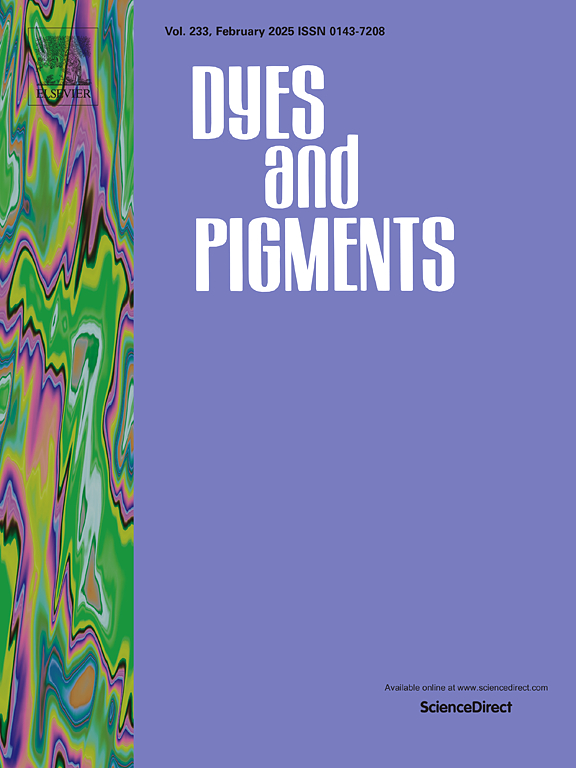Design of α-ketone aryl thioesters photoinitiators for LED photopolymerization
IF 4.1
3区 工程技术
Q2 CHEMISTRY, APPLIED
引用次数: 0
Abstract
In this study, we designed and synthesized four α-ketone aryl thioesters photoinitiators (PTEs) with excellent cytocompatibility for LED photopolymerization using a simple one-step reaction. We investigated the potential photopolymerization initiation mechanisms of PTEs under 405 nm LED irradiation through ultraviolet–visible absorption spectroscopy, high-resolution mass spectroscopy, and electron spin resonance. Our findings revealed that PTEs can effectively initiate the photopolymerization of acrylate monomer tripropylene glycol diacrylate (TPGDA) under either 405 nm or 455 nm LED irradiation, achieving double bond conversions of approximately 80 % or higher after 180 s of irradiation. Remarkably, compared to the commercial photoinitiator 2,4,6-trimethylbenzoyl-diphenylphosphine oxide (TPO) and benzoyl methacrylate (MBF), PTEs exhibit certain advantage in initiating photopolymerization of triethylene glycol dimethacrylate (TEGDMA) widely used for dental materials under the irradiation of 405 nm. More importantly, MO-PTE has better cytocompatibility compared to TPO and exhibits a great potential in the fields of LED photopolymerization, biomaterials and food packaging.
设计用于 LED 光聚合的 α-酮芳基硫代酯光引发剂
在这项研究中,我们设计并合成了四种α-酮芳基硫代酯光引发剂(PTEs),它们具有优异的细胞相容性,可通过简单的一步反应实现 LED 光聚合。我们通过紫外可见吸收光谱、高分辨率质谱和电子自旋共振研究了 PTEs 在 405 纳米 LED 照射下的潜在光聚合引发机制。我们的研究结果表明,在 405 纳米或 455 纳米 LED 的辐照下,PTEs 可有效地引发丙烯酸酯单体三丙二醇二丙烯酸酯(TPGDA)的光聚合反应,在 180 秒的辐照后可实现约 80% 或更高的双键转化率。值得注意的是,与商用光引发剂 2,4,6-三甲基苯甲酰基二苯基氧化膦(TPO)和甲基丙烯酸苯甲酰酯(MBF)相比,PTE 在 405 纳米辐照条件下引发广泛用于牙科材料的三甘醇二甲基丙烯酸酯(TEGDMA)的光聚合时表现出一定的优势。更重要的是,与 TPO 相比,MO-PTE 具有更好的细胞相容性,在 LED 光聚合、生物材料和食品包装领域表现出巨大的潜力。
本文章由计算机程序翻译,如有差异,请以英文原文为准。
求助全文
约1分钟内获得全文
求助全文
来源期刊

Dyes and Pigments
工程技术-材料科学:纺织
CiteScore
8.20
自引率
13.30%
发文量
933
审稿时长
33 days
期刊介绍:
Dyes and Pigments covers the scientific and technical aspects of the chemistry and physics of dyes, pigments and their intermediates. Emphasis is placed on the properties of the colouring matters themselves rather than on their applications or the system in which they may be applied.
Thus the journal accepts research and review papers on the synthesis of dyes, pigments and intermediates, their physical or chemical properties, e.g. spectroscopic, surface, solution or solid state characteristics, the physical aspects of their preparation, e.g. precipitation, nucleation and growth, crystal formation, liquid crystalline characteristics, their photochemical, ecological or biological properties and the relationship between colour and chemical constitution. However, papers are considered which deal with the more fundamental aspects of colourant application and of the interactions of colourants with substrates or media.
The journal will interest a wide variety of workers in a range of disciplines whose work involves dyes, pigments and their intermediates, and provides a platform for investigators with common interests but diverse fields of activity such as cosmetics, reprographics, dye and pigment synthesis, medical research, polymers, etc.
 求助内容:
求助内容: 应助结果提醒方式:
应助结果提醒方式:


